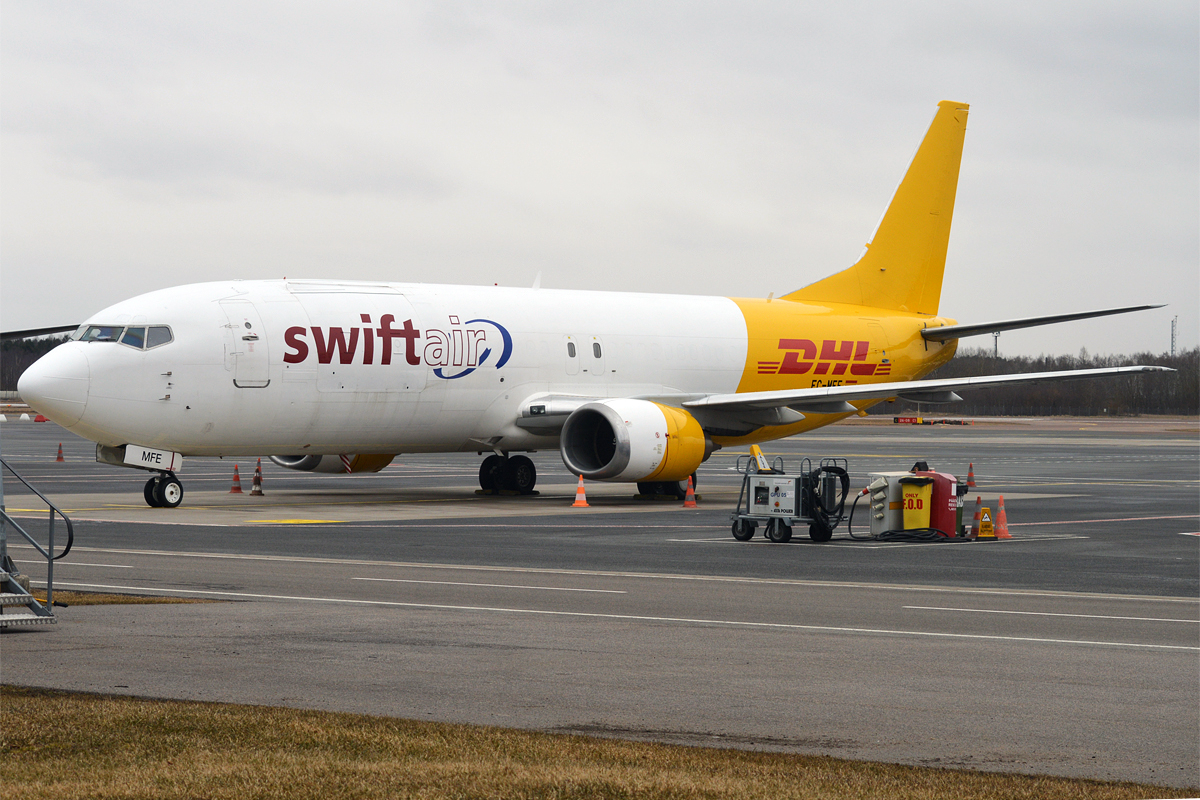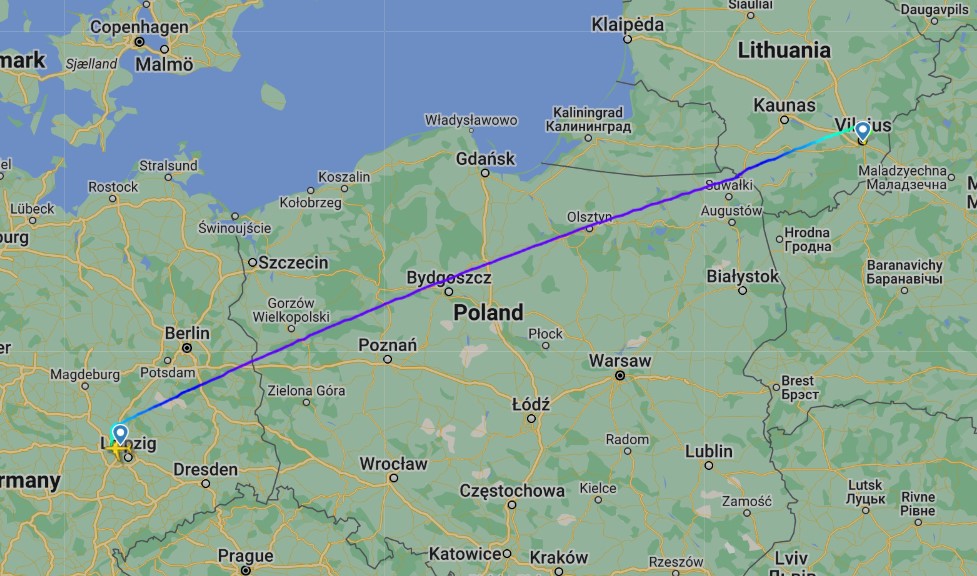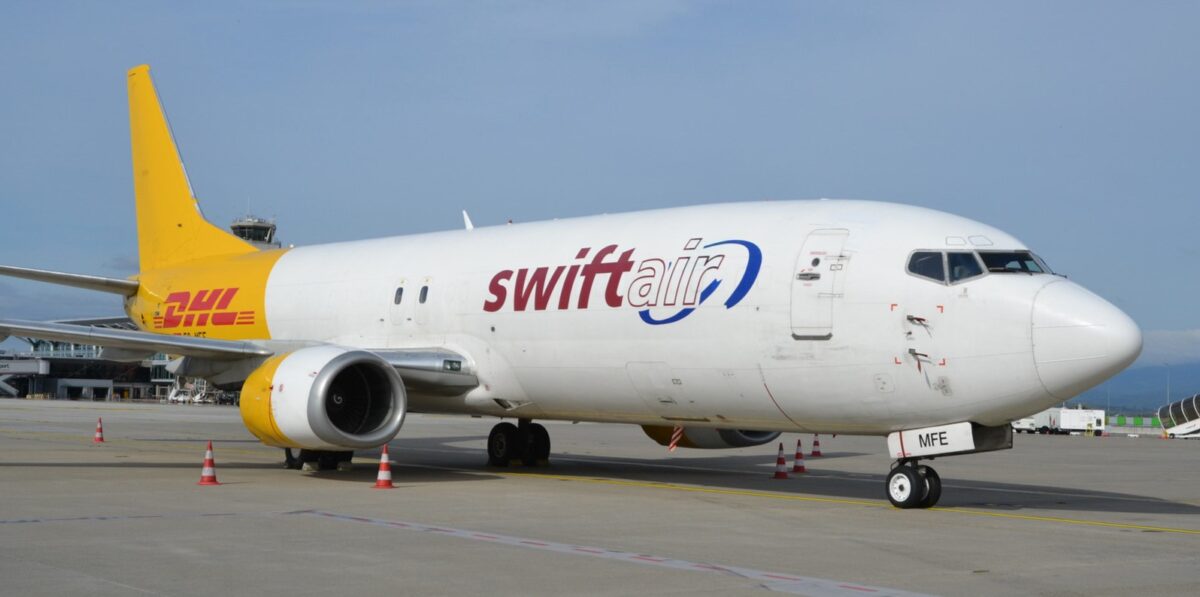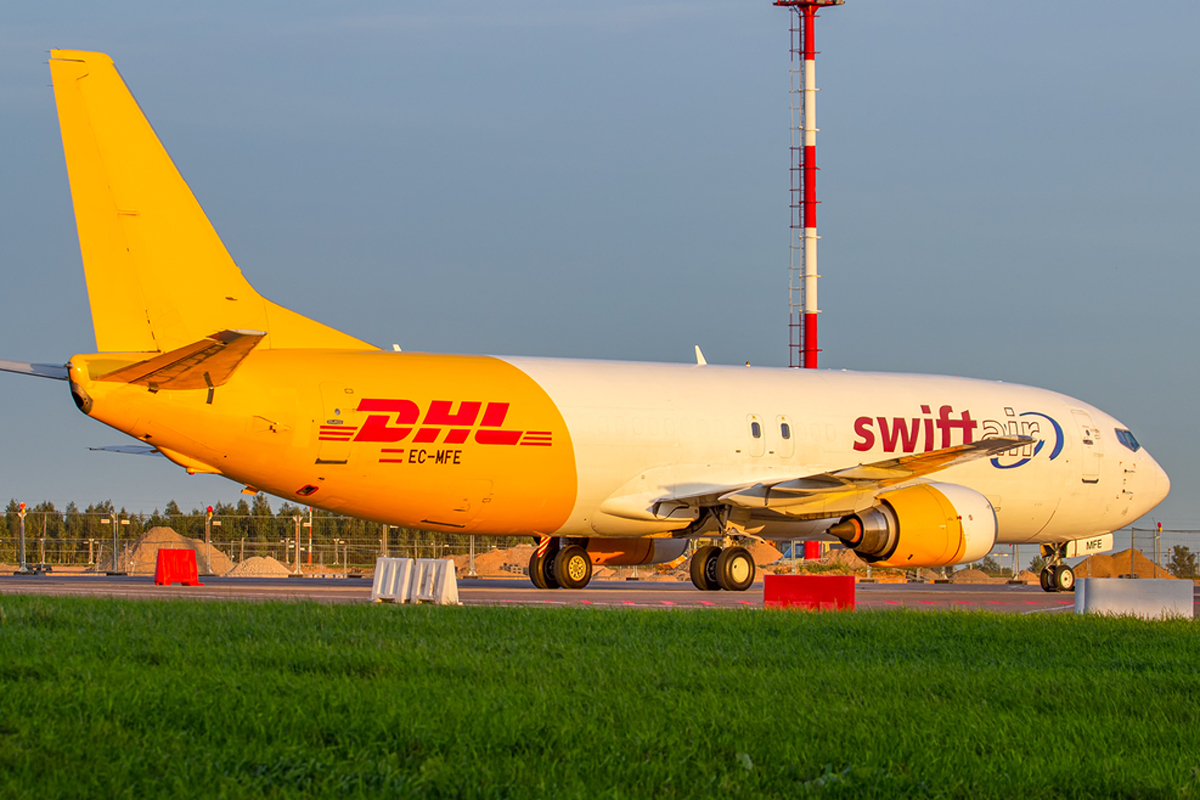On the morning of November 25. 2024, a Boeing 737-400 freighter operated by Swift Air of Spain on behalf of global logistics giant DHL crashed on final approach into Vilnius Airport (VNO) in Lithuania, the aircraft’s intended destination. In this article, AeroTime summarizes what we know so far about the incident, and what aspects of the flight the authorities are likely to be focusing on as part of their investigation.
The flight involved was a routine DHL Express service from its European central logistics hub at Leipzig/Halle Airport (LEJ) in Germany to the Lithuanian capital city of Vilnius. The service, operating with flight number BCS18D, operates four nights per week using Boeing 737-400 freighter aircraft.
The aircraft involved in the Vilnius incident was operated by Spanish all-cargo airline Swift Air under contract to DHL. The aircraft, registered EC-MFE, was 31.1 years old, having first been delivered as a passenger plane to now-defunct carrier Australian Airlines in October 1993 and was later operated by Qantas. The aircraft was converted into an all-cargo variant in 2014 and was delivered to Swift Air in February 2015.


In the week leading up to the incident in Vilnius, the aircraft had operated multiple sectors, paying visits to various European airports including Cologne, Amsterdam, Dublin, Brussels, Bologna, Skopje, Athens, Barcelona, and Milan. Onboard the incident flight was two pilots of Spanish origin, plus two DHL employees – one German citizen plus one Lithuanian citizen. At the time of writing, reports say that one person (reportedly one of the pilots) has lost their life as a result of the incident.
Analysis of the flight
Reviewing the flight data obtained from the aviation data website Flightrardar24 shows that flight BCS18D departed Leipzig at 03:08 local time for the one-hour and 20-minute flight to Vilnius. The was 32 minutes ahead of its scheduled departure time of 03:40. The flight was due to arrive in Vilnius at around 05:30 local time.
After departure from Leipzig’s runway 26L, the aircraft headed north and then eastwards, climbing to 33,000ft (10,300m) and crossing the German/Polish border at 03:26, around 18 minutes after take-off. The flight proceeded in an easterly direction and passed into Lithuanian airspace at 05:11 local time. The flight then began its descent into Vilnius and passed to the north of the city on a right-hand downwind approach for its landing on runway 19 at Vilnius Airport.


The flight turned right for its final approach at 05:25 descending below 5,000ft and established on its final approach to the airport. At this late stage, all appeared normal with the aircraft seemingly in the correct profile for landing on runway 19 and telling ATC it was established on the ILS (Instrument Landing System) for runway 19. However, having descended down the glideslope to 650ft and traveling at 150 knots, the flight data comes to an abrupt stop.
Video evidence seen by AeroTime appears to show the aircraft fully established for its landing, with little sign of anything adverse occurring onboard. The aircraft is passing over the suburb of Liepkalnis less than a mile from touchdown at that point. It then appears to suddenly pitch violently nose-up before it disappears from view before a large post-impact fire becomes visible.
What the authorities have said
According to local media reports, the official cause of this incident is currently under investigation. However, it has so far been revealed that air traffic control (ATC) at Vilnius Airport had been in contact with the crew of BCS18D throughout its final approach. However, while ATC had transmitted a landing clearance to the crew of BCS18D, no meaningful response was received.
According to a report by Lithuanian media outlet LRT, the Boeing 737 crashed close to residential buildings, resulting in a two-story building catching fire. A representative from the Vilnius Fire Protection and Rescue Department (PAGD) informed LRT Radio that at least four people had been injured, including two pilots and two passengers. However, this information has since been updated to confirm that one of the pilots has since died.
According to the Agence France-Presse, a statement from DHL said: “The plane was making an emergency landing. The cause of the crash is currently unknown, and an investigation is already underway.”


Possible causes
Given that the flight had seemingly passed uneventfully and was on schedule as it approached Vilnius Airport, authorities will be keen to examine exactly what happened onboard the plane during the final moments of its approach into Vilnius Airport. The video appears to give no clear sign of anything adverse happening with the plane, with no impact of terrain or mechanical defect seemingly in evidence. Poor weather conditions do not appear to be a factor.
That would leave a potential loss of control or pilot error as contenders for the primary cause of the accident. The sudden nose-up attitude could indicate the onset of a stall, for example, a recovery from which at such a low altitude would be impossible. However, in an update from the local police department, Darius Jauniškis, the Head of the State Security Department, stated after a meeting with Lithuania’s President that “the possibility of terrorism could not be rejected”.
The possibility of terrorism stems from reports published in July 2024 that incendiary devices had been sent from Lithuania via DHL to other parts of the DHL network. These devices subsequently caused fires at DHL logistics centers located in Leipzig as well as Birmingham in the UK. This will undoubtedly form a crucial part of the investigation, along with data from the aircraft’s flight data recorder and cockpit voice recorders, both of which should give clear data as to what was happening onboard during the final moments of the flight.
Note: This is a developing story, and this article will be updated should any more relevant details be made public by the authorities in Lithuania.

